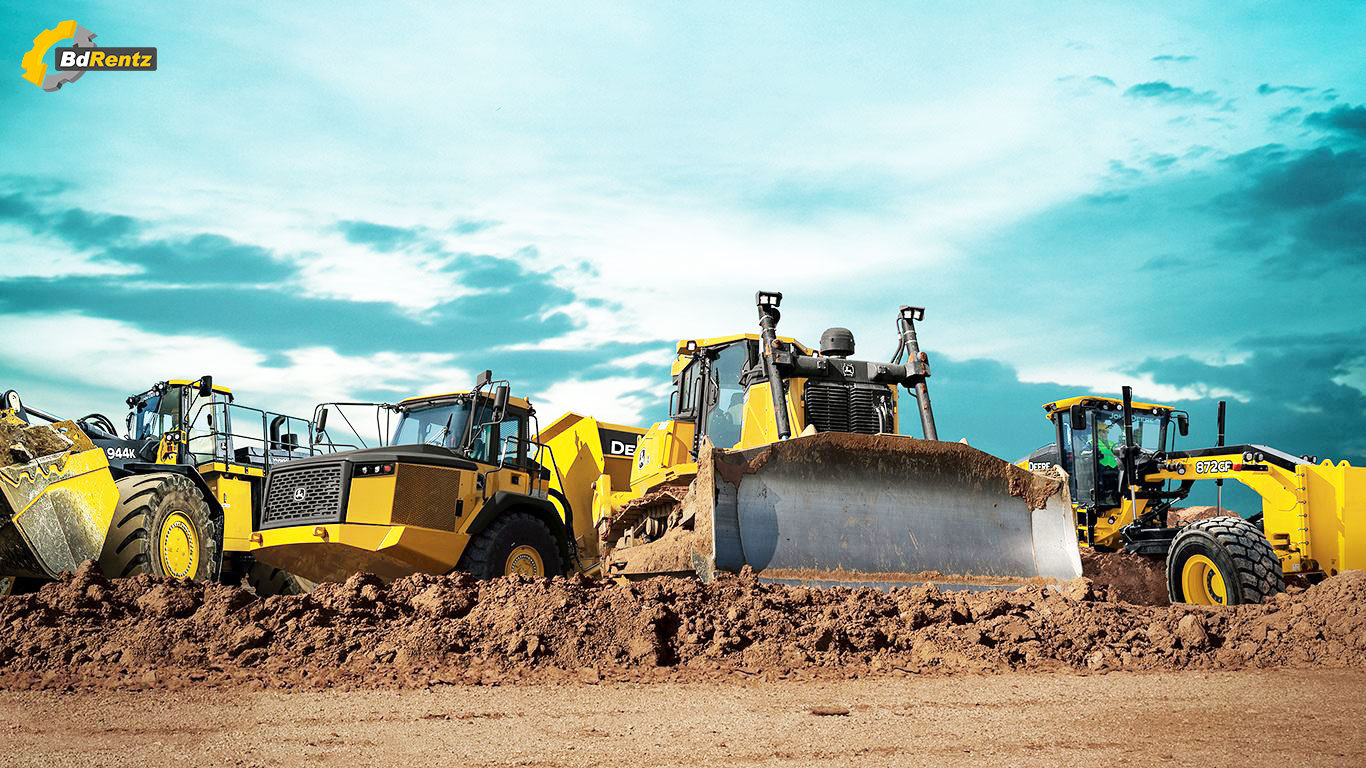Heavy Equipment Rental: Large Machinery for Any Construction Task
Heavy Equipment Rental: Large Machinery for Any Construction Task
Blog Article
Maximize Your Spending Plan by Recognizing the Costs Related To Building Equipment Leasings
Understanding the full extent of costs related to building and construction equipment leasings is essential for optimizing your spending plan. While the preliminary rental charge might appear uncomplicated, various added costs-- such as transportation, gas surcharges, and maintenance-- can rapidly collect, affecting your monetary preparation. Moreover, being mindful of different charges and the intricacies of rental agreements can help prevent unexpected economic worries. What methods can be utilized to successfully handle these prices and ensure a much more effective rental experience?
Summary of Rental Prices
When thinking about building tools rentals, comprehending the linked prices is paramount for reliable budgeting and project preparation. Rental prices can vary dramatically based upon a number of variables, consisting of equipment type, period of rental, and location. The first rental cost commonly reflects the devices's market demand and its associated operational capacities, influencing the overall expense.
In addition to the base rental rate, supplementary prices may develop, such as transport charges, fuel surcharges, and upkeep costs. It is vital to account for these added expenses to accurately assess the complete expense of renting out equipment. The rental period can affect pricing; longer leasings may qualify for discounted prices, while short-term leasings might incur greater daily charges.

Failure of Rental Prices
A detailed understanding of rental rates is necessary for service providers and job managers intending to optimize their budget plans. Rental prices for building and construction devices generally include numerous components, consisting of base prices, time-based charges, and use costs.
Base prices are the core charges connected with the rental of the tools, frequently established by the type and size of the equipment. These rates can differ considerably, influenced by variables such as tools demand, schedule, and regional market patterns. Time-based costs, which might be daily, weekly, or monthly, serve to accommodate different task timelines and rental periods.
In addition, rental rates might include usage fees, which apply when devices is made use of past a defined limit, ensuring that the rental company can account for damage. Seasonal need variations can likewise influence rental prices, with peak construction periods typically commanding higher prices.
Moreover, understanding the rental company's plans pertaining to maintenance and insurance can supply further insight right into the general expense structure. By analyzing these elements, specialists can make enlightened decisions, guaranteeing the option of rental devices straightens with both project needs and budget restrictions.
Additional Fees to Take Into Consideration
Comprehending the details of additional charges is vital for contractors to handle their overall service expenditures efficiently. Past the common rental prices, different supplemental costs can dramatically affect the overall cost of tools leasing. These fees commonly include distribution and pick-up fees, which can differ based on distance and logistics associated with carrying the equipment to and from the job site.
Furthermore, some rental firms might enforce gas click reference additional charges if the devices is returned with less gas than when leased. It is additionally essential to recognize potential cleansing charges, specifically for customized devices that calls for comprehensive maintenance after usage.

Extensively evaluating the rental contract and making clear these added fees in advance can assist professionals make sure and prevent unexpected expenses that spending plans stay intact throughout the project lifecycle.
Repair And Maintenance Expenses
Routine upkeep and fixing expenditures are typically ignored factors that can considerably influence the general cost of construction tools rentals. When renting tools, it is crucial to think about not just the rental costs yet also the prospective prices related to maintaining the machinery in optimum operating condition.
Numerous rental business include standard upkeep as component of the rental agreement; nonetheless, much more substantial repair services or unforeseen breakdowns can cause additional expenses. It's important to review the rental agreement thoroughly to understand what upkeep solutions are covered and what obligations fall on the occupant.
In addition, tools that is not properly maintained can bring about inefficiencies on duty site, possibly triggering hold-ups and raising task costs. To mitigate these dangers, it is suggested to conduct normal inspections and preserve open communication with the rental service provider relating to any issues that arise during use.
Insurance and Obligation Expenses
Insurance policy and liability prices are important components that can significantly influence the general cost of construction devices services (aerial lift rental). These costs ensure that both the rental business and the client are secured from potential financial losses developing from mishaps, damage, or theft throughout the rental duration

Additionally, customers need to understand any kind of deductibles or exclusions in the insurance plan, as these can impact potential out-of-pocket costs. Comprehending the conditions of any type of insurance policy coverage is crucial to stay clear of unexpected costs. Eventually, budgeting for insurance coverage and liability expenditures can help make sure a smoother rental experience and safeguard versus economic threats connected with construction tasks.
Verdict
In verdict, a detailed understanding of the expenses associated with construction tools leasings is essential for efficient budget plan administration. Inevitably, informed decision-making relating to equipment leasings contributes to the overall success of building and construction endeavors.
Rental expenses can differ dramatically based on a number of aspects, including devices kind, duration of service, and location (construction equipment rentals). The rental period can affect prices; longer leasings might qualify for affordable prices, while temporary services could sustain greater day-to-day fees
By conducting complete research and involving with reputable rental firms, contractors can properly navigate the complexities of rental pricing, eventually optimizing their monetary sources.
Beyond the common rental prices, different supplemental charges can considerably influence the overall price of tools leasing. Rental business often give obligation insurance coverage that covers injuries to 3rd events or damages to residential or commercial property, while equipment damage insurance coverage can cover the cost of repair work or replacement if the rented equipment is harmed.
Report this page